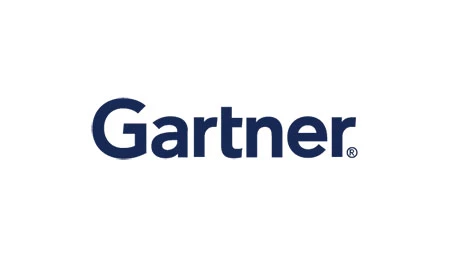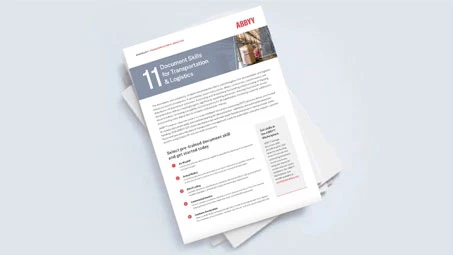
ABBYY Timeline
Process analysis


What is process analysis?
Process analysis involves using specialized tools to visualize and analyze process data.
ABBYY Timeline offers more than 25 prebuilt process analysis tools that are ready to use as soon as the data is loaded. These tools make it easy for you to analyze your “as-is” processes and understand why and how the processes behave as they do, including drilling into identified issues and evaluating in-depth process performance.
Gartner® Hype Cycle™ for Enterprise Process Automation, 2025

ABBYY Named a Leader in the 2023 Gartner® Magic Quadrant™ for Process Mining Tools

Gartner® Hype Cycle™ for Enterprise Process Automation, 2025

ABBYY Named a Leader in the 2023 Gartner® Magic Quadrant™ for Process Mining Tools

Access best-practice process analysis tools
Timeline is built for ease of use. Its user-friendly, point-and-click interface makes process optimization accessible to both technical and non-technical users.
Detailed case analysis
Drill down into any timeline and all its relevant sub-processes to identify unexpected problems and potential root causes that drive process behaviors.
Process pattern search
Use drag-and-drop functionality to easily build complex queries to zero in on process instances that match those conditions with sub-second response time.
Workflow/journey mapping
Processes that utilize queue-based routing of people or work items, like customer service or call center operations, are analyzed automatically.


Prebuilt and ready to use
Use Timeline tools to quickly identify the biggest opportunities for improvement, with unprecedented accuracy.
- Schema analysis: Automatically visualize process schemas in both structured and ad hoc or case management business process environments.
- Path analysis: Easily compare variations and highlight outliers that may be costing you more than expected, or introducing operational risk.
- Primary path view: See the most frequent and common flow of events, finding deviations from the common flow, the reasons for such deviations, and revealing them from different perspectives.

Improving the customer journey with process intelligence

“ABBYY Process Intelligence has helped us make a real cultural change: to rely on data and make data-driven improvements.”
- Simon Higgs, Director of Business Transformation
Why use process analysis?

Find problems in your existing processes
Use extensive filtering capabilities to drill into identified issues and evaluate in-depth process performance.

Optimize your processes
Timeline quantifies process performance and makes it easy to target high-value improvement.

Gain full visibility
Finally achieve complete understanding of your processes with end-to-end visibility, regardless of the number of IT systems involved.

Increase profitability
Uncover and optimize process execution time and cost to increase efficiencies.

Improve customer journey
Reduce errors, reveal customer journeys, and uncover potential bad or wasteful behavior.

Establish an audit trail of activity
Present auditable, data-driven evidence of compliance, protocol, and SLA risks.

Process Intelligence
Video tutorials
ABBYY Timeline Process Intelligence Platform
The most comprehensive solution for process mining, task mining, process analysis, prediction, simulation, and more.

Timeline Path Analysis
Analyze all process instances to identify hidden execution patterns that may be beneficial or detrimental.

Timeline Bottleneck Analysis
Get a more granular look into exactly where time is spent as part of your business process.

Technology connections

ABBYY | SAP
ABBYY Timeline SAP Connector provides an SAP-certified module that removes the time-consuming steps of data extraction, event log creation, and visualization from SAP applications with just a few clicks.


ABBYY | Alteryx
The ABBYY Timeline Connector for Alteryx brings the power of process intelligence to your Alteryx analytic processes—seamlessly integrating ABBYY Timeline’s process mining and discovery, process analytics and visualization, real-time process monitoring, and predictive process analytics capabilities.


ABBYY | FlexiCapture
ABBYY Timeline for FlexiCapture is an intuitive, value-added solution that enables you to build a “digital twin” of your FlexiCapture processes, analyze them in real time to identify bottlenecks, and predict future outcomes.

Learn more about process analysis
Article
Process Intelligence vs. Business Intelligence: What’s the Difference?
Business intelligence and process intelligence are like the central nervous system of the organization. Discover the difference between these two technologies and how they can both work for you.

Article
What Is Process Mining (and Why Isn’t It Enough)?
Understand what basic process mining provides for your organization, where it falls shorts, and how you can bridge the gaps with a comprehensive process intelligence solution.
eBook
Unleash Process Mining and IDP to Create a Stellar Customer Experience
Today’s customers expect a frictionless experience. Financial Services is now using process intelligence to get the answers they need in order to provide it. Download this ebook to understand how.
Article
Process Intelligence vs. Business Intelligence: What’s the Difference?
Business intelligence and process intelligence are like the central nervous system of the organization. Discover the difference between these two technologies and how they can both work for you.

Article
What Is Process Mining (and Why Isn’t It Enough)?
Understand what basic process mining provides for your organization, where it falls shorts, and how you can bridge the gaps with a comprehensive process intelligence solution.
eBook
Unleash Process Mining and IDP to Create a Stellar Customer Experience
Today’s customers expect a frictionless experience. Financial Services is now using process intelligence to get the answers they need in order to provide it. Download this ebook to understand how.
Process analysis FAQs
What is business process analysis (BPA) and why is it important?
Business process analysis is the detailed, multi-step examination of each part of a process to identify what is working well in the current process, where improvements can be made, and how those improvements can be executed. Business process analysis is an important methodology for businesses to compete by delivering an excellent customer experience, reducing operating expenses, and ensuring compliance with regulatory requirements.
What methodologies and techniques are commonly used in business process analysis?
Process analysis involves using specialized tools to visualize and analyze process data. This includes visualizations of data from multiple back-end systems to help you understand business relationships and process flows from end to end. Process analysis tools should be pre-built and readily available in the tool to use as soon as the data is loaded. These tools make it easy for you to analyze your “as-is” processes and understand why and how the processes behave as they do. A variety of best-practice tools and advanced features are available, along with extensive filtering capabilities that enable you to drill into identified issues and evaluate in-depth process performance…showing you the way to optimization.
How does business process analysis contribute to process improvement and innovation?
Access to detailed process insights helps organizations clearly set ROI expectations, assure agile service delivery, and realize the benefits of an improved customer journey. Process analysis can rapidly help organizations determine automation candidates in processes. It also gives enterprises the ability to understand “as-is” process states for a more complete picture to view process execution in the context of time, rather than through snapshots. Process discovery, process mining, task mining, and process analysis form the foundation for understanding how a process actually operates.
What data and metrics should be considered during business process analysis?
Process analysis offers a variety of tools for drilling into uses cases across industries and operational areas to determine key metrics. Examples include path analysis, detailed case analysis, process query, protocol analysis, workflow/journey mapping, side-by-side comparison, and operational dashboards. For example, an insurance company may use process analysis to identify bottlenecks or inefficiencies in its claims processing system.
What are the best practices for conducting a successful business process analysis?
Best practices for conducting business process analysis involve using best-practice, pre-built tools within a modern process intelligence solution. Analysis tools should be ready to use as soon as your data is loaded. They should be accessible to both technical and non-technical users so that all stakeholders can participate in the analysis and decision-making process. Specialized analysis features should be available without requiring any coding.
Request a demo today!
Schedule a demo and see how ABBYY Process Intelligence can change the way you work—forever




